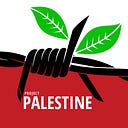In color: Amazing photos of Palestine from 19th century
The National Library’s photo collections include two albums whose pictures were produced at the end of the 19th century using the process known as photochrom. What was this method and why do the photos resemble oil paintings more than the black-and-white originals?
(Source; Chen Malul, National Library, Sep. 7, 2017)
The first color photo was taken in 1880 by Thomas Sutton.
Twenty years after the creation of the first photographic image, a Swiss printer named Orell Fussli developed photochrom. Unlike color photography that captures the object’s original colors, photochrom colorized black-and-white photos. Fussli’s innovation was to use lithography, a printing method that had been around for centuries.
The first album, produced in 1900, is a collection of photos from a pilgrimage by Austrians to the Holy Land. But it wasn’t the tourist-pilgrims who took the photos. At that time there were several professional photographers in Ottoman Palestine. These guys took the photos, and the coloring was done by Photochrom Zurich.
The pilgrims, like other clients who were interested in photos from the Holy Land, selected their favorite pictures, apparently of places they had visited on their tour.
So it’s no surprise that most of the photos in the first album show key locations in Jerusalem and nearby areas. The only picture not from there is Jaffa. In that photo, Jaffa longshoremen are seen rowing the boat of renowned tour guide Rolla Floyd. We also see the guide himself, as well as a few tourists.
In this album, the entrance plaza to the Al-Aqsa Mosque was given wonderful colors, with Jaffa Gate, Lions Gate and the Foundation Stone in the Dome of the Rock also getting their colors back. It’s possible that the way these photos were colored reflects the image the Swiss employees had of the land’s residents. In all the photos they are shown wearing heavy garments with loud color combinations.
We know very little about the history of the second album, which was produced earlier. We do know that on every cardboard page there is a stamp of ownership of a Swiss evangelical school. It’s possible that the clients who bought the album visited the Holy Land, but they may have only been interested in obtaining photographs from there.
The 36 photochrom prints in this album show landscapes in Ottoman Palestine and Syria. Several photos in the first album are found in the second one as well, or sometimes the photos were taken at a slightly different moment.
